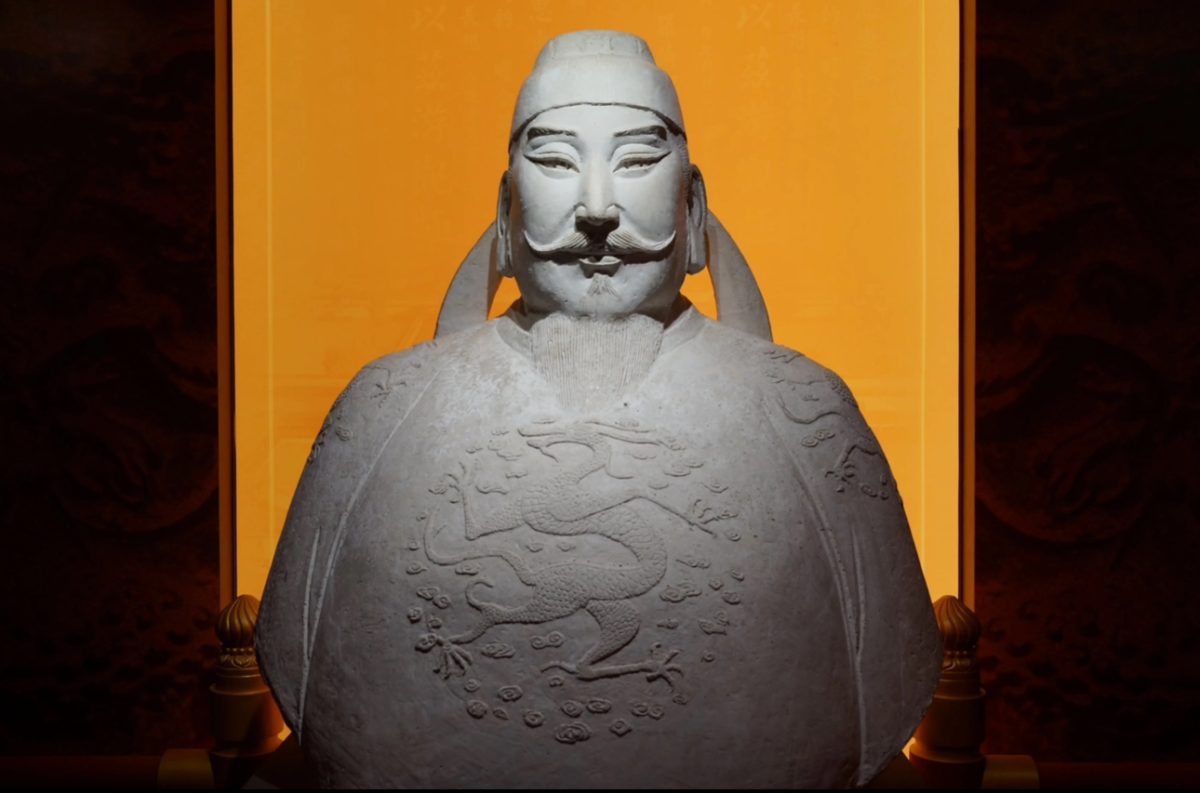“Zhenguan – Li Shimin and His great Tang dynasty” is on view from May 1, in the National Museum of Classic Books. A total of 15 museums were selected to exhibit 249 exhibits in 140 groups.
The exhibition presents to the public the reign of Emperor Taizong Tang, the second emperor of the Tang dynasty. The Tang Dynasty (618-690, 705-907) was one of the most powerful countries in the world at that time. It had a strong state and a prosperous economy. It also had an active open-door policy, and you could see many Western faces on the roads.

Emperor Li Shimin, considered the founder of the Tang Dynasty along with his father, was one of the greatest emperors in Chinese history. During his reign, there was unprecedented political, economic and cultural development.
He took advice with an open mind, appointed wise ministers, knew people well, implemented new policies, and thought of danger in times of peace. And laid a solid foundation for the later flourishing Tang Dynasty. As a result, this created the “Reign of Zhenguan”, the famous peaceful era in Chinese history.

This exhibition takes Li Shimin’s growth path as the baseline, and shows the public his way of governance and an aesthetic feast that belongs to the great Tang dynasty.
In this exhibition, we can see many artifacts from the canonical collection.
Stone-carved Sogdian Whirl Dance Tomb Gate
The stone carvings of the Sogdian Whirl Dance Tomb Doors were discovered in 1985 and collected in the Ningxia Museum. And the front of these two stone doors is very smooth. In addition, each of their surfaces there is a shallow carving of a male dancer who is dancing.

The Tang Dynasty was the heyday of music and dance culture, many artifacts related to music and dance were unearthed. On this set, two male dancers are characterized by curly hair, beard, deep eyes and high nose, and both holding a long scarf to dance. In other words, they are very obvious “Hu”(people).
From this set of artifacts, we can get a glimpse of the openness of the society and cultural tolerance at that time. Moreover, Sogdian Whirl Dance is a famous dance of the Northwest ethnic minorities. It vividly demonstrates the image of the Hoho dance that flourished in the Tang Dynasty 1300 years ago. And it also shows the great integration of ethnic groups in the Tang Dynasty.

Gilt silver jar
The Gilt-silver jar was discovered in the tomb of Prince Zhanghuai and his wife, the grandchildren of Li Shimin. The gilt-silver jar is 37.5 centimeters high, with a maximum belly and neck of 12.8 centimeters, and weighs 1.5 kilograms. Further, the handle of the jar is cast as a deep-eyed, high nose with helmet-shaped cap of the human head, the body of the jar is decorated with mainly relief images of figures. These images of figures form a serialized story in the Greek style.

Gilt-silver jar originally belonged to the Persian dynasty of drinking vessels, made in the Bactria region of Central Asia during the Sassanian era. Therefore, the shape of the jar is completely in the style of Sassanid gold and silver. However, the figure of a human head on the handle of the jar is different from the Sasanian Persian figure, which belongs to the Bactrian region of Central Asia.
This Sasanian style piece is a strong evidence to show the world the cultural exchanges between China and the West through the Silk Road. In Chinese ancient texts, the term “Hu bottles” is used to refer to artifacts that came from Western countries. Overall, the Gilt-silver jar is the most representative of the “Hu bottles”.

The tombstone of Yuchi Jingde
The tombstone is now collected in Zhaoling museum. Its body stone color crystal, detailed carving, square, each side 1.2 meters wide, 0.25 meters thick. And this is the mausoleum excavation of the mausoleum of zhaoling garden in the largest one.
The carving on it for lonicera multi-branched lotus trailing grass and twelve zodiac statues. It is carved on all four sides of the Baoxiang flower pattern. And engraved with five lines of white calligraphy, five characters in line.
The text is “the late Datang Situ and the state governor on the pillar state Eguo Zhongwu Gong Yuchi Fujun epitaph of the tomb”.

Yuchi Jingde was a famous general of the Tang Dynasty and one of the archetypes of the Gate God in later times. He followed Emperor Taizong of the Tang to fight in the four directions. During the reign of Zhenguan, he defended the borders and expanded the territory and made great achievements in battle.
During the Xuanwumen Incident, Yuchi Jingde saved Li Shimin from the bamboo forest. Since then, Li Shimin trusted Yuchi Jingde. Above all, he was an important part of the “the reign of Zhenguan”, which, together with Tang Taizong Li Shimin and other rulers and officials, ushered in the heyday of Chinese feudal society.

Information
Date: 01 May to 25 August 2024
Location: National Museum of Classic Books
Address: No. 33 Zhongguancun South Street, Haidian District, Beijing
This is a paid exhibition, so tickets can be purchased through the WeChat public number “National Museum of Canonical Books”.
Ticket price: Single: 98 RMB
Double: 169 RMB
Concessionary: 68 RMB
The exhibition is open according to the following schedule
Tuesday to Sunday:09:00 am to 05:00 pm
Closed:every Monday (except public holidays)
Telefono:010-88545426
Source
Ministry of culture and tourism of the people’s republic of China
National Museum of Classic Books
Some images courtesy of Xinhua News Agency
